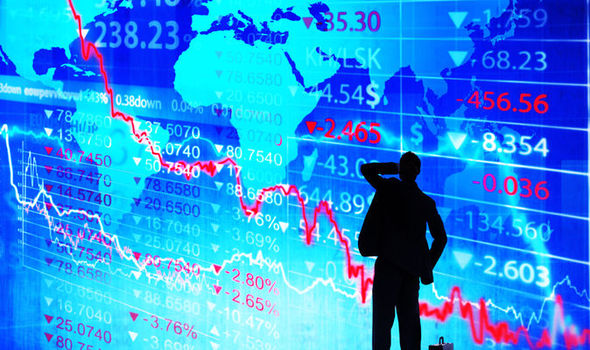

The hit on fixed-income ETFs in March was a wake-up call to many investors. What was viewed as a safe-haven asset wasn’t as safe as originally thought. Liquidity issues stretched the discrepancy between their NAVs and their intrinsic value. Use Overbond’s liquidity-adjusted pricing to screen for the best performing bond ETFs.
Source: The Globe and Mail
Fixed-income exchange-traded funds are typically considered steady, liquid products for those seeking relatively safe, low-volatility investments. They proved to be anything but when the COVID-19 pandemic market crash hit in March, with bond ETFs suddenly trading at big discounts to their net asset values.
Experts say that investors should be looking at their bond ETF holdings in a new light, and they have views about the best ones to hold now.
“There are significant embedded risks in bond ETFs that people don’t necessarily understand,” says David Pepall, an associate portfolio manager at Aventine Asset Management in Toronto, who calls these investments “chameleons,” because they’re bonds with equity-like qualities. “You can trade them intraday, you can get in and out, and individuals and corporations can utilize them in strategies that would be almost impossible with the underlying basket of bonds.”
Bond ETFs are less liquid than they appear because the bonds underpinning them are illiquid, held by institutional investors and mutual funds and traded through middle players, Mr. Pepall explains. It’s been less and less possible for these “authorized participants” to do this since the time of the global financial crisis, he says, because “there isn’t necessarily a buyer.”
This “unspoken risk” is something most retail investors have been unaware of, Mr. Pepall says. They must now consider the corporate bonds underlying their ETFs, including their sector, size, duration and convexity, the relationship between the bond’s prices and yields. “It’s time to look under the hood, not just at the one-line description.”
During these turbulent times, Mr. Pepall believes investors should look at ETFs in currency, gold, cash or government bonds. For instance, he suggests the iShares 7-10 Year Treasury Bond ETF (IEF-Q) or the iShares 20+ Year Treasury Bond ETF (TLT-Q), traditional U.S. government bonds where “you know what you’re getting. They’re very large, very liquid and they essentially represent one thing.”
When it comes to bond ETFs, John Hood, president and portfolio manager of J.C. Hood Investment Counsel in Toronto, says he “won’t touch anything that’s not investment-grade.” For example, he says ETFs with high-yield or emerging-market bonds can have liquidity problems. Mr. Hood says that in March, when he saw that there were starting to be liquidity issues even with the investment-grade bonds held by his clients, “within 10 minutes I sold them all.”
When things calm down, he’ll stick with investment-grade bond ETFs that are low-cost (with fees of 15 basis points or less), short-term and highly liquid. For example, he notes one product that held up well in the March crash was the BMO Ultra Short Term Bond ETF (ZST-T), which has all investment-grade bonds with durations of less than a year. His bottom line with all investments: “I won’t buy anything I can’t sell in 10 minutes, ever.”
Mark Noble, executive vice-president of ETF strategy at Horizons ETFs Management (Canada) Inc., says the hit to fixed-income ETFs in March was “a wake-up call” to many investors. “What was viewed as a safe-haven asset wasn’t as safe as originally thought,” he says.
The rally since then has favoured investment-grade bonds, Mr. Noble says, while government bonds have “done extraordinarily well.” Aggregate bond ETFs combining the two have “come back rapidly from the bottom,” Mr. Noble notes, and they make sense for those looking to generate income amid historically low-interest rates, although every investment comes with risk.
“They’re not a silver bullet, and you’re not going to avoid the liquidity issues associated with bonds,” he says, noting that with investment-grade corporate-bond ETFs yielding about 3 per cent, compared with government-bond ETFs at about 0.40 per cent, “your risk-reward trade-off is still somewhat attractive.”
From Mr. Noble’s company, the fast-growing Horizons CDN Select Universe Bond ETF (HBB-T), for example, blends government and investment-grade corporate bonds. The Horizons Active Corporate Bond ETF (HAB-T), with 100-per-cent investment-grade corporate bonds, comes with the potential for more risk but also higher price performance.
Canadian preferred shares, a troubled asset class with interest rates diving in the past couple of years, “may have hit bottom” and attract those searching for fixed-income yield, Mr. Noble adds. “It’s hard to imagine them being worse than they have been,” he says. Horizons offerings there include the Horizons Active Pref Share ETF (HPR-T) and Horizons Laddered CDN Pref Index ETF (HLPR-T).
Mr. Pepall of Aventine Asset Management says investors opting for corporate-bond ETFs today should consider investment-grade large caps and find out which bonds they hold and in which sectors. He recommends looking into those sectors for signs of credit dislocation and the impact of current and future fiscal-stimulus measures. In the U.S., for example, with the coming presidential election we might see capital injections, an increase in the minimum wage or forgiveness of student debt, which could have an impact on certain types of bonds.
“There’s so much volatility, it makes sense to really know what you own and why,” Mr. Pepall cautions. “Information is changing so fast, at least you can adapt with it.”


